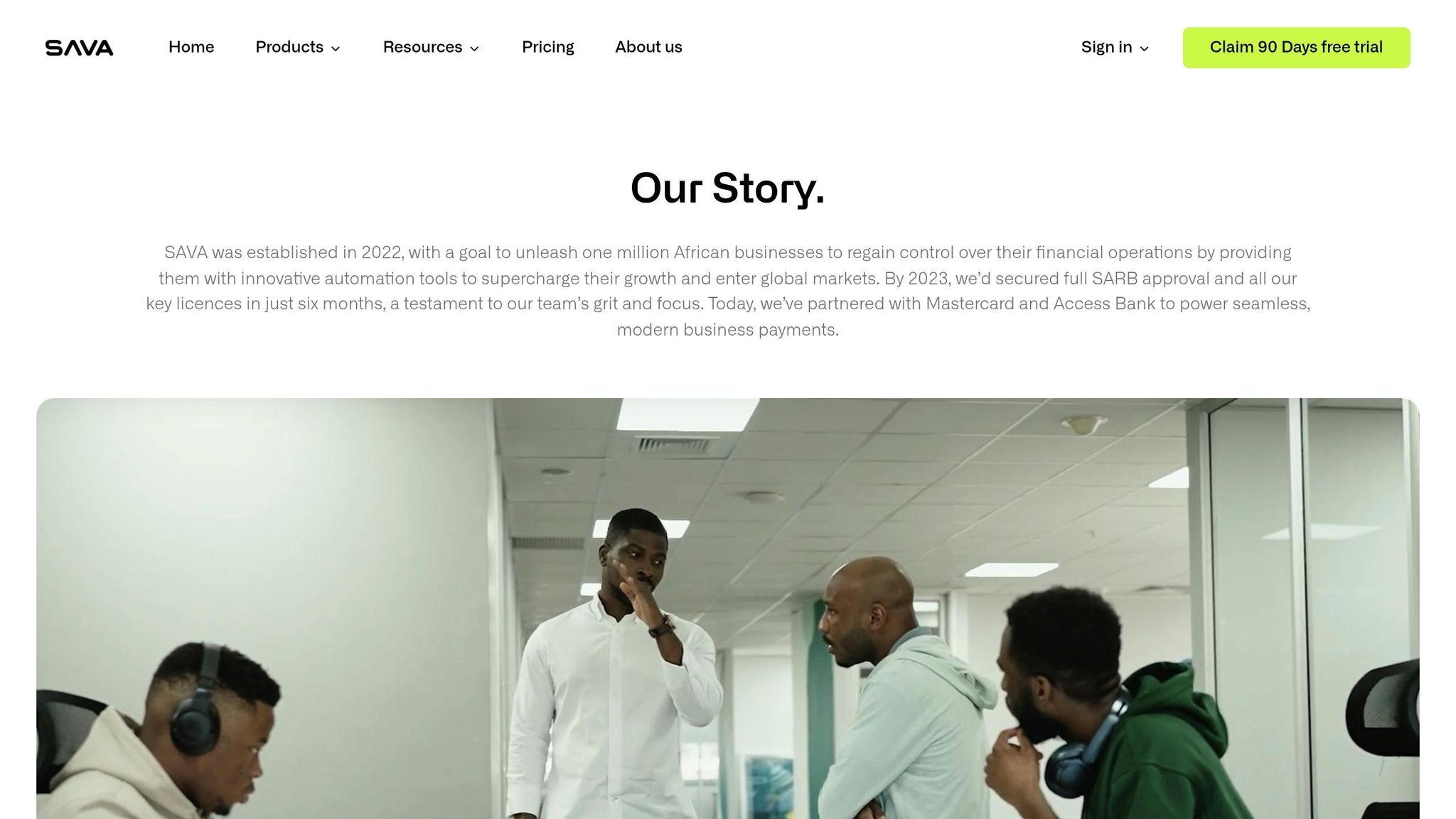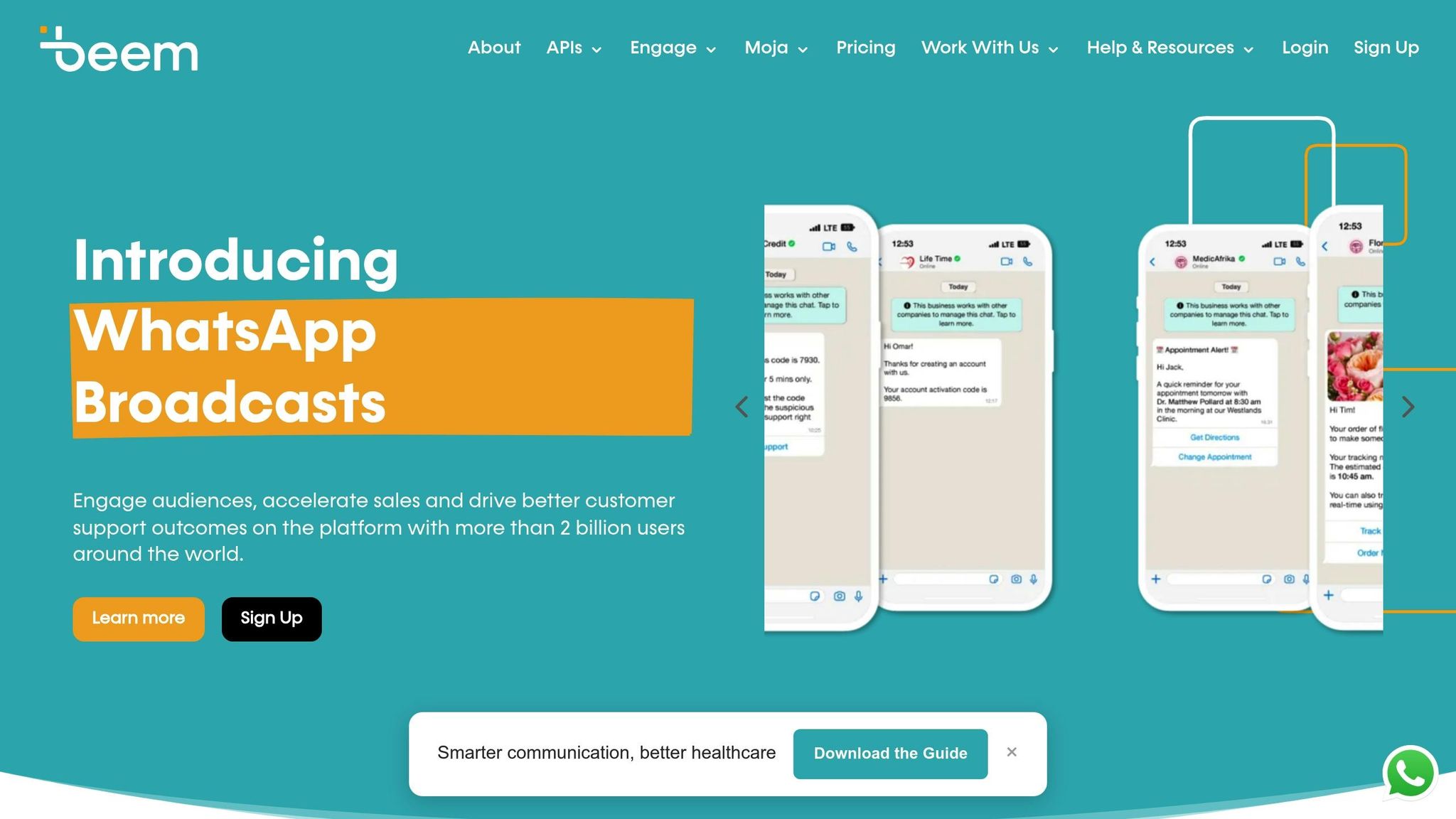Building a successful business without external funding is possible. African startups like Shuttlers and SAVA have proven this by reaching over $1 million in annual revenue through bootstrapping. Here’s how they did it:
- Shuttlers (Nigeria): A bus-hailing platform that grew to 15,000 daily rides by focusing on high-demand routes and an asset-light model, partnering with vehicle owners instead of purchasing buses.
- SAVA (Nigeria): A sales technology company that prioritized customer needs and early revenue generation to scale without external investment.
Key Takeaways:
- Focus on solving specific local problems.
- Use lean operations and reinvest profits strategically.
- Prioritize customer relationships and organic growth methods like referrals.
- Manage cash flow carefully and diversify revenue streams.
Challenges for African bootstrappers include cash flow management, hiring talent, reaching customers with limited budgets, and high infrastructure costs. However, resourceful strategies like alternative marketing, customer-driven product development, and strategic hiring can help overcome these barriers.
While bootstrapping allows full control and financial discipline, it often means slower growth. External funding can accelerate scaling but comes with trade-offs like shared decision-making and investor expectations. Founders must weigh these options based on their business goals.
African startups are showing that with determination and smart strategies, it’s possible to grow profitable businesses without relying on external capital.
Case Study: Shuttlers (Nigeria)
Company Background and Business Model
Shuttlers is a bus-hailing platform based in Lagos, Nigeria, designed to tackle the city’s infamous traffic problems and unreliable public transportation. Through its mobile app, the company offers scheduled, trackable bus rides, providing a practical alternative for commuters. Since its founding in 2016, Shuttlers has focused on serving middle-class professionals who want an affordable and dependable option that bridges the gap between private car ownership and chaotic public transport.
Instead of owning its own fleet, Shuttlers operates on an asset-light model by partnering with vehicle owners and drivers. The company takes a commission from each ride while offering technology, route planning, and customer acquisition services to its partners. This approach allows them to scale more efficiently while focusing on optimizing routes and delivering a seamless commuting experience.
Growth Milestones and Methods
By 2020, Shuttlers surpassed $1 million in annual revenue, just four years after its launch. The company grew from managing 50 daily passengers in its first year to facilitating over 15,000 daily rides across various routes in Lagos.
A few key strategies fueled this growth:
- Concentrating on high-demand routes, such as those connecting Victoria Island and the mainland.
- Implementing dynamic pricing to manage peak-hour demand.
- Ensuring consistent service quality to build customer trust and loyalty.
Rather than splurging on expensive advertising, Shuttlers relied on word-of-mouth marketing and referral programs. This lean approach allowed the startup to reinvest its early revenue into expanding its network and improving its technology infrastructure, all while keeping operational costs low.
Key Lessons from Shuttlers
Shuttlers is a prime example of how startups in Africa can thrive by addressing local challenges with technology and smart business strategies. Their decision to partner with vehicle owners instead of purchasing buses outright enabled them to scale quickly without requiring heavy capital investment. This asset-light approach highlights the kind of resourceful thinking that often defines successful African startups.
Case Study: SAVA (Nigeria)

SAVA’s Product and Market Position
SAVA, a Nigerian startup, has carved out a niche in the sales technology space by creating solutions tailored specifically for the local market. This laser-focused approach has allowed the company to address the unique needs of its customers, setting the groundwork for impressive revenue growth.
Path to $1M+ Revenue Without Investors
What sets SAVA apart is its ability to surpass $1 million in annual revenue without relying on external funding. While the exact strategies they employed aren’t documented, their success highlights the power of staying disciplined and resourceful when scaling a business.
Lessons for Other Founders
SAVA’s experience offers valuable takeaways for entrepreneurs looking to grow their businesses without outside investment:
- Put customer needs first: Align your product development with what your customers truly need.
- Generate revenue early: Focus on building a revenue stream from the start to create a stable financial base.
- Be financially disciplined: Manage resources carefully and reinvest strategically in areas that drive growth.
SAVA’s story is proof that with determination and a sharp focus on solving real market problems, founders can build thriving businesses without depending on external capital.
Common Problems and Solutions for African Bootstrappers
Main Challenges for Bootstrappers
Building a startup without external funding is no small feat, and for African entrepreneurs, the challenges can be even more pronounced. One of the biggest hurdles is managing cash flow, especially during periods of growth. Founders often find themselves juggling reinvestments with day-to-day operational costs. Seasonal dips and economic slowdowns can further strain revenue, making it tough to stay afloat.
Another significant issue is hiring and retaining talent. Startups with limited budgets struggle to compete with well-funded companies that can offer higher salaries and attractive perks. This is particularly evident in industries like fintech and e-commerce, where skilled developers and experienced leaders come at a premium.
Reaching customers is another uphill battle. Without the large marketing budgets of venture-backed competitors, bootstrapped startups must rely on resourceful and creative ways to gain visibility. Expanding into new markets becomes even harder without the financial muscle to support rapid scaling.
On top of these challenges, high infrastructure costs – such as unreliable internet, expensive data plans, and limited access to affordable cloud services – add another layer of difficulty. These costs eat into budgets, slowing down growth and impacting the overall customer experience.
Practical Solutions and Methods
Despite these challenges, many African bootstrappers have found ways to thrive by adopting resourceful strategies. For starters, alternative marketing approaches can deliver big results without breaking the bank. Word-of-mouth marketing is often a game changer, with startups focusing heavily on customer satisfaction to drive organic referrals. Social media, content marketing, and partnerships with complementary businesses also offer cost-effective ways to reach new audiences.
Another winning strategy is customer-driven product development. By staying closely connected to early users and incorporating their feedback, startups can ensure they’re building solutions that truly address customer needs. This approach not only saves money but also reduces the risk of creating features that don’t resonate with the market.
To maintain steady cash flow, successful bootstrapped startups often diversify their revenue streams. Whether it’s offering multiple product tiers or branching into complementary services, this strategy helps cushion the business during revenue dips.
When it comes to talent, strategic hiring practices can make all the difference. Some startups offer equity, flexible work arrangements, or training opportunities to attract skilled candidates. Others focus on hiring junior talent and investing in their development, creating a pipeline of skilled employees from within.
Bootstrapping vs External Funding Comparison
For founders weighing their options, the table below highlights the key differences between bootstrapping and seeking external funding:
| Factor | Bootstrapping | External Funding |
|---|---|---|
| Control & Decision-Making | Full control over decisions | Shared control with investors; board input |
| Growth Speed | Slower, steady growth | Faster scaling with capital infusion |
| Financial Risk | Personal financial exposure | Diluted ownership; investor expectations |
| Time to Market | Longer due to limited resources | Faster with sufficient funding |
| Operational Flexibility | High flexibility to pivot or adapt | Limited by investor demands |
| Long-term Sustainability | Early focus on profitability | Often prioritizes growth over profits |
| Exit Pressure | No external pressure for exits | Investors expect eventual returns |
| Learning Curve | Hands-on experience in all areas | Access to investor expertise and networks |
This comparison provides a clear framework to help founders decide which path aligns best with their goals and resources.
sbb-itb-dd089af
Taha Jiwaji’s bootstrapped success | The Beem Africa Story #beemafrica #foundersconnect

Practical Lessons for African Founders
Drawing inspiration from seven-figure, bootstrapped startups, here are some practical strategies that African founders can apply to grow their businesses effectively.
Building Strong Customer Relationships
When budgets for advertising are tight, happy customers become your best marketing tool. Successful founders often treat their first 100 customers as partners, not just buyers. They respond quickly to support inquiries, listen to feedback, and make improvements based on that input. This hands-on, customer-focused approach naturally drives word-of-mouth promotion.
Being upfront about your startup’s challenges can also help build trust. If customers know you’re navigating growing pains, they’re often more patient and supportive. Creating a community around your brand – through newsletters, social media, or even personal check-ins – keeps customers engaged and loyal. Regular updates and communication ensure your startup stays on their radar, encouraging renewals, upgrades, and referrals. These customer connections are the foundation for scaling efficiently, especially when resources are limited.
Making the Most of Limited Resources
Even with a tight budget, you can achieve impressive results by using free or affordable tools strategically. Platforms like WordPress, social media, and email marketing can deliver professional outcomes when used consistently.
Instead of trying to be everywhere online, focus on one or two social media platforms where your audience is most active. Sharing valuable content – like blog posts, short videos, or insights about your industry – positions you as an authority, all without spending heavily on ads. This content can continue to attract and engage your audience over time.
Collaborations can also help you reach new audiences without extra costs. Partnering with complementary businesses, guest posting on popular blogs, or cross-promoting with other startups can introduce your product to more people. Additionally, automation tools, such as email campaigns, social media scheduling apps, and basic CRM systems, free up your team to focus on tasks that drive growth. However, resource optimization means making tough choices – sometimes saying no to opportunities that don’t align with your growth goals. And while bootstrapping can take you far, there may come a time when external funding becomes necessary.
Deciding When to Seek External Funding
Bootstrapping is a great way to validate your idea, but there are moments when seeking external funding becomes essential. If customer demand outpaces your ability to deliver, if growth slows down significantly, or if cash flow issues threaten your operations, it might be time to explore external capital.
When you have a clear plan for how additional funds will accelerate growth – whether for hiring, marketing, or product development – investment can help you scale faster. In industries where being first or building a strong network effect is critical, upfront capital can make all the difference. Many startups follow a phased approach: bootstrapping to prove the concept, seeking angel funding to establish product-market fit, and then raising larger rounds to scale.
Timing is everything. Raising funds when your business is growing and you have a clear vision for the future typically leads to better terms and higher valuations. On the other hand, fundraising out of desperation can weaken your position.
“Seeking funding allowed me to access the capital I needed to accelerate growth and also introduced me to strategic partners who contributed their expertise and connections–which played a vital role in our success.” – Nancy Twine
Conclusion: The Future of Bootstrapped African Tech
The journeys of Shuttlers and SAVA highlight something powerful: African startups can build million-dollar businesses without relying on external funding. These companies have flourished by addressing real-world challenges with business models that stand the test of time.
Inspired by these successes, a new wave of founders is redefining African entrepreneurship. Instead of waiting for venture capital or international investors, they’re charting their own paths. They’re proving that African startups can compete on a global scale while staying deeply connected to their local markets.
The ingenuity shown by bootstrapped founders like those behind Shuttlers and SAVA is remarkable. With limited resources, they’ve turned obstacles into opportunities by understanding their markets and building close relationships with their customers. Without the luxury of massive marketing budgets, every interaction matters. This approach pushes them to create better products and deliver outstanding service, often resulting in businesses that are more resilient to economic shifts and market challenges.
As the continent’s tech ecosystem grows, with increasing smartphone adoption and a rising middle class, we’re likely to see more startups embracing this bootstrapped approach. Young entrepreneurs are beginning to realize that persistence, creativity, and a focus on solving real problems can be just as powerful as venture capital. This shift is laying the groundwork for a new era of African innovation.
The future of African tech isn’t just about attracting outside investment – it’s about proving that sustainable, profitable businesses can thrive by staying true to their mission. As more startups hit the million-dollar mark through bootstrapping, they’re paving the way for others to follow, showing the world that African innovation can succeed on its own terms.
FAQs
How did African startups like Shuttlers and SAVA successfully bootstrap their way to over $1 million in revenue?
African startups like Shuttlers and SAVA have shown how strategic bootstrapping can lead to impressive results, each surpassing $1 million in revenue by focusing on sustainable growth and smart decision-making.
Shuttlers took a customer-first approach by expanding its routes and improving its technology to deliver better services. Instead of leaning heavily on external funding, they reinvested their profits and scaled their operations thoughtfully. This strategy allowed them to grow their reach in Nigeria and even beyond, hitting major milestones along the way.
SAVA, on the other hand, leaned heavily into data-driven growth marketing to bring in and retain customers. By creating a strong demand for their services and keeping their sights set on long-term profitability, they managed to scale steadily while staying financially independent.
These two startups highlight how organic growth, smart reinvestment, and creative problem-solving can drive success in Africa’s entrepreneurial space.
How do African startups that bootstrap to $1M in revenue handle challenges like managing cash flow and hiring talent without external funding?
Bootstrapped startups in Africa are finding smart ways to navigate cash flow challenges by focusing on early revenue generation and keeping a tight grip on expenses. Instead of depending on external funding, they often reinvest profits or explore creative funding options, like forming strategic partnerships. This approach helps them stay nimble and financially stable.
When it comes to hiring, these startups prioritize building a strong company culture to attract talented individuals who share their vision. They also tap into freelance networks, embrace remote work, and use innovative recruitment methods to bring in top talent without overspending. These strategies enable them to grow steadily, even with limited resources.
When is the right time for a bootstrapped startup to seek external funding, and what are the pros and cons?
When a bootstrapped startup finds itself needing more capital to keep up with increasing customer demand, expand its operations, or speed up product development, it might be time to explore external funding. This often becomes necessary when internal resources can no longer support the company’s growth trajectory.
External funding comes with its pros and cons. On the plus side, it provides access to larger financial resources, enabling faster scaling and the ability to break into new markets or invest in advanced technologies. On the downside, it can lead to dilution of ownership, a potential loss of control over key decisions, and added pressure to deliver results that meet investor expectations.
Deciding whether or not to pursue external funding requires a close look at your startup’s financial health, growth objectives, and overall vision. Evaluating these aspects carefully will help you determine if bringing in outside capital aligns with your long-term business strategy.
Related posts
/* Shares”}};
/* ]]> */



















